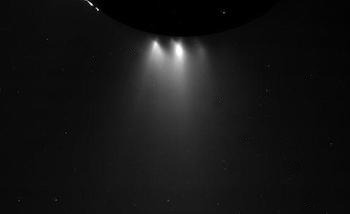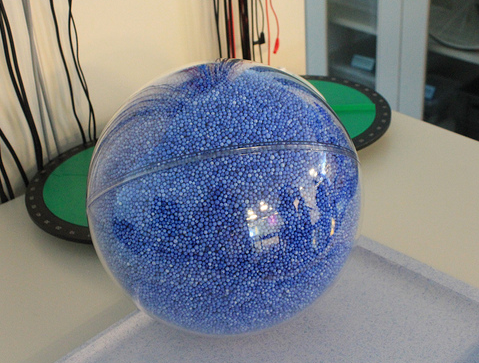I’m Permitted To Use Terms Like ‘clearly,’ 'obviously,’ 'it Is Self-evident,’ And 'it Can Be
I’m permitted to use terms like ‘clearly,’ 'obviously,’ 'it is self-evident,’ and 'it can be shown’ and skip over vast quantities of information to leave you wondering how it is 'clearly’ the case.
Physical chemistry professor (via mathprofessorquotes)
More Posts from Theidlerhour and Others
Solar System: 5 Things to Know This Week
Our solar system is huge, so let us break it down for you. Here are 5 things to know this week:
1. Letting the Air Out

The atmosphere on Mars is whisper-thin and drier than bone–but it wasn’t always that way. For the past year, the MAVEN mission has been orbiting the planet, piecing together clues about what happened to all the air on Mars. At 2 p.m. EST on Nov. 5, we will hold a briefing on some new findings about the Martian atmosphere. Make sure to tune in on NASA Television.
2. How Much Juno about Jupiter?

We’re all going to know a lot more about the king of planets soon, thanks to the Juno mission. Juno’s project scientist will be giving a live lecture on Nov. 5 and 6 to explain what discoveries might await and how the spacecraft is expected to survive Jupiter’s dangerous radiation environment for over a year, long enough to make over 30 close polar passes. Watch the live lecture HERE.
3. Excitement at Enceladus

Our Cassini spacecraft has returned stunning images from its ultra-close flyby of Saturn’s active moon Enceladus on Oct. 28. The photos are providing a quick look at Enceladus and its plume of icy vapor from the moon’s geysers. But some of the most exciting science is yet to come, as scientists will be poring over data from Cassini’s instruments to see what they detected as they flew through the plume.
4. A New Dimension in Lunar Landscapes

The Lunar Reconnaissance Orbiter maps the moon in boulder-by-boulder detail daily. The team that operates the spacecraft’s most powerful camera has been releasing 3D versions of its high-resolution looks at the surface. You can see depth and detail in the pictures if you can get or make some red-blue glasses.
5. Pluto in Perspective

The New Horizons spacecraft has fired its engines again as it carries out a series of four maneuvers propelling it toward an encounter with the ancient Kuiper Belt object 2014 MU69, a billion miles farther from the sun than Pluto. Meanwhile, it continues the ongoing download of data from the Pluto encounter, including this recent stunner.
Make sure to follow us on Tumblr for your regular dose of space: http://nasa.tumblr.com
failed my lab; got 150% yield on a reaction and apparently writing “god works in mysterious ways” as the conclusion to my lab report doesn’t fly in a university setting



Check out these scientists reacting to the first images from the Hubble Space Telescope after they successfully fixed its wonky mirror.
Then watch our music video celebrating Hubble here.
Then read all about Hubble’s 25 years in space here.


This is a model of how many Earth’s can fit inside the sun.



THIS IS REBLOG RELEVANT FOR ONLY TODAY IN THE WHOLE OF HUMAN HISTORY AND ITS FUTURE


Physicists often quote from T. H. White’s epic novel The Once and Future King , where a society of ants declares, ‘Everything not forbidden is compulsory.’ In other words, if there isn’t a basic principle of physics forbidding time travel, then time travel is necessarily a physical possibility. (The reason for this is the uncertainty principle. Unless something is forbidden, quantum effects and fluctuations will eventually make it possible if we wait long enough. Thus, unless there is a law forbidding it, it will eventually occur.)
Michio Kaku

Just for your info, actually he’s talking (without quoting) about the Gell-Mann’s Totalitarian Principle:
“Everything not forbidden is compulsory.”
(via scienceisbeauty)
It is by logic we prove. It is by intuition we discover.“
Henri Poincaré (via stardust-seedling)
-
 witchsouth liked this · 4 years ago
witchsouth liked this · 4 years ago -
 esme-logan liked this · 4 years ago
esme-logan liked this · 4 years ago -
 fillytoria liked this · 5 years ago
fillytoria liked this · 5 years ago -
 ricewithfish liked this · 6 years ago
ricewithfish liked this · 6 years ago -
 alinaisalright reblogged this · 6 years ago
alinaisalright reblogged this · 6 years ago -
 tremendousroadmugperson-blog liked this · 6 years ago
tremendousroadmugperson-blog liked this · 6 years ago -
 professorpoppy reblogged this · 6 years ago
professorpoppy reblogged this · 6 years ago -
 king-of-books liked this · 6 years ago
king-of-books liked this · 6 years ago -
 nuckton liked this · 6 years ago
nuckton liked this · 6 years ago -
 besmrtnica-blog liked this · 7 years ago
besmrtnica-blog liked this · 7 years ago -
 pizzl liked this · 7 years ago
pizzl liked this · 7 years ago -
 kid-crashed liked this · 7 years ago
kid-crashed liked this · 7 years ago -
 goldkirk liked this · 7 years ago
goldkirk liked this · 7 years ago -
 hadesgodofthehell liked this · 7 years ago
hadesgodofthehell liked this · 7 years ago -
 markwatneythespacepirate liked this · 7 years ago
markwatneythespacepirate liked this · 7 years ago -
 doomed-cinnamonroll liked this · 8 years ago
doomed-cinnamonroll liked this · 8 years ago -
 emmamason2020-blog liked this · 8 years ago
emmamason2020-blog liked this · 8 years ago -
 breakstylus liked this · 8 years ago
breakstylus liked this · 8 years ago -
 miseria-macabra reblogged this · 8 years ago
miseria-macabra reblogged this · 8 years ago -
 lesbian-chemist reblogged this · 8 years ago
lesbian-chemist reblogged this · 8 years ago -
 thesuitcasexoxo reblogged this · 8 years ago
thesuitcasexoxo reblogged this · 8 years ago -
 elementarrry reblogged this · 8 years ago
elementarrry reblogged this · 8 years ago -
 quecksilvereyes liked this · 9 years ago
quecksilvereyes liked this · 9 years ago -
 sseneke reblogged this · 9 years ago
sseneke reblogged this · 9 years ago -
 sseneke liked this · 9 years ago
sseneke liked this · 9 years ago -
 shrimpyjoe liked this · 9 years ago
shrimpyjoe liked this · 9 years ago -
 verynicecooldogs liked this · 9 years ago
verynicecooldogs liked this · 9 years ago -
 dewpoints liked this · 9 years ago
dewpoints liked this · 9 years ago -
 checkeredcoffin reblogged this · 9 years ago
checkeredcoffin reblogged this · 9 years ago -
 ratmanbri liked this · 9 years ago
ratmanbri liked this · 9 years ago -
 secondaristh reblogged this · 9 years ago
secondaristh reblogged this · 9 years ago -
 astridberfjord reblogged this · 9 years ago
astridberfjord reblogged this · 9 years ago -
 astridberfjord liked this · 9 years ago
astridberfjord liked this · 9 years ago -
 groovy-sheep liked this · 9 years ago
groovy-sheep liked this · 9 years ago -
 thegirldownthelaine reblogged this · 9 years ago
thegirldownthelaine reblogged this · 9 years ago -
 curioussheet liked this · 9 years ago
curioussheet liked this · 9 years ago
"To awaken my spirit through hard work and dedicate my life to knowledge... What do you seek?"
229 posts









